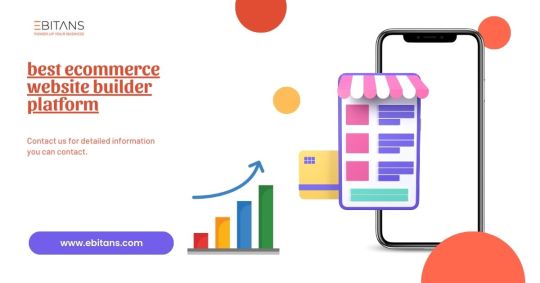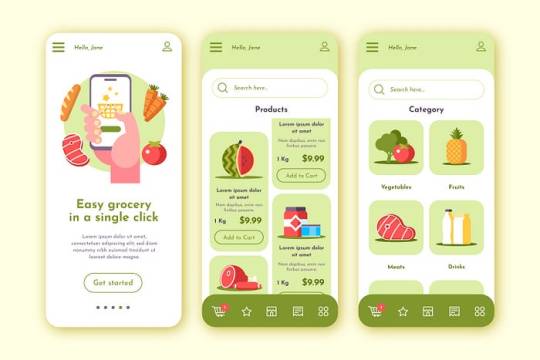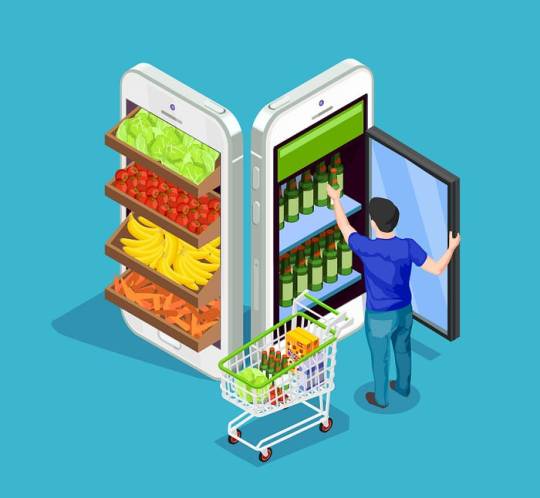#Multi-Store Inventory Management
Explore tagged Tumblr posts
Text
With Syncerize, you can easily synchronize inventory data between different Shopify stores.
#Multi-Store Inventory Management#Shopify management process#real-time Inventory Synchronization#Product and Orders syncing#Multiple Shopify stores#Seamless Store Management#multi-store business#multiple store chains
1 note
·
View note
Text
Discover Hike POS, the ultimate retail point-of-sale solution designed for modern businesses. From inventory management and real-time reporting to multi-store operations and eCommerce integration, Hike simplifies your retail operations. Compatible with any device, including iPads, PCs, and Macs, it lets you sell anywhere and manage everything effortlessly. With features like centralized inventory sync, staff access controls, and powerful analytics, Hike POS empowers businesses like coffee shops, clothing stores, food trucks, and more. Streamline your retail experience with Hike today!
#pos#Hikepos#POS system#Retail pos#POS software#Retail business#In store pos#Multi store pos#Hike#business#software#inventory#inventory management
2 notes
·
View notes
Text
Enhance Your Business with Retail POS Software and Multi-Store Management
Managing a retail business requires the right technology. With Retail POS Software in Dubai, businesses can streamline sales transactions and improve customer experience. At the same time, Accounting and Inventory in UAE ensures proper financial tracking and stock management. For businesses with multiple locations, Multi Store Management UAE is essential for seamless operations.
Benefits of Retail POS Software in Dubai
A reliable Retail POS Software in Dubai helps businesses handle transactions efficiently. It speeds up the checkout process, reduces errors, and provides detailed sales reports. This software also integrates with accounting and inventory systems, ensuring smooth operations.

The Importance of Accounting and Inventory in UAE
Effective Accounting and Inventory in UAE helps businesses track revenue, expenses, and stock levels accurately. With the right system, businesses can automate invoicing, manage supplier details, and prevent stock shortages. Proper accounting and inventory management lead to better decision-making and profitability.

Managing Multiple Stores with Multi Store Management UAE
For businesses with several locations, Multi Store Management UAE simplifies operations. This system allows business owners to monitor sales, inventory, and staff performance across multiple stores from one central platform. It helps maintain consistency and ensures smooth business operations.

Conclusion
To run a successful retail business, investing in the right technology is crucial. Retail POS Software in Dubai improves sales transactions, Accounting and Inventory in UAE ensures accurate financial management, and Multi Store Management UAE helps businesses oversee multiple locations efficiently. These solutions work together to enhance business performance and profitability.
0 notes
Text
Multi-Chain Store POS in India
With the use of Multi-Chain Store POS in India, your employees will be able to access customer profiles, purchase histories, and preferences, enabling them to offer exceptional customer care and personalized suggestions. This session covers multichannel point-of-sale (POS) software, which offers unified solutions for managing inventory, customers, and orders.
#POS System For Multi-Chain Stores In India#Mobile POS Solution India#Softpos Billing in India#Employee Management Software in India#Reporting and Analytics Solutions in India#Contactless Payments in India#Inventory Management Software in India
1 note
·
View note
Note
Hey Mark! High-fives to those who put up the full decklist for 20 Ways to Win. It’s a (mostly) comprehensive list of what we, the local game store inventory managers, need to streamline our prepwork. Note, however, the ‘mostly’ — the article has several minor inaccuracies as per original sets for list cards, missing indicators for variants of multi-variant cards (ex: azorius guildgate from RNA - which one?) and no pictures for tokens. Any chance we can get it fully updated? Thanks!
I can ask when I’m back in the office.
21 notes
·
View notes
Note
What kind of work can be done on a commodore 64 or those other old computers? The tech back then was extremely limited but I keep seeing portable IBMs and such for office guys.
I asked a handful of friends for good examples, and while this isn't an exhaustive list, it should give you a taste.
I'll lean into the Commodore 64 as a baseline for what era to hone in one, let's take a look at 1982 +/-5 years.
A C64 can do home finances, spreadsheets, word processing, some math programming, and all sorts of other other basic productivity work. Games were the big thing you bought a C64 for, but we're not talking about games here -- we're talking about work. I bought one that someone used to write and maintain a local user group newsletter on both a C64C and C128D for years, printing labels and letters with their own home equipment, mailing floppies full of software around, that sorta thing.
IBM PCs eventually became capable of handling computer aided design (CAD) work, along with a bunch of other standard productivity software. The famous AutoCAD was mostly used on this platform, but it began life on S-100 based systems from the 1970s.
Spreadsheets were a really big deal for some platforms. Visicalc was the killer app that the Apple II can credit its initial success with. Many other platforms had clones of Visicalc (and eventually ports) because it was groundbreaking to do that sort of list-based mathematical work so quickly, and so error-free. I can't forget to mention Lotus 1-2-3 on the IBM PC compatibles, a staple of offices for a long time before Microsoft Office dominance.
CP/M machines like Kaypro luggables were an inexpensive way of making a "portable" productivity box, handling some of the lighter tasks mentioned above (as they had no graphics functionality).
The TRS-80 Model 100 was able to do alot of computing (mostly word processing) on nothing but a few AA batteries. They were a staple of field correspondence for newspaper journalists because they had an integrated modem. They're little slabs of computer, but they're awesomely portable, and great for writing on the go. Everyone you hear going nuts over cyberdecks gets that because of the Model 100.
Centurion minicomputers were mostly doing finances and general ledger work for oil companies out of Texas, but were used for all sorts of other comparable work. They were multi-user systems, running several terminals and atleast one printer on one central database. These were not high-performance machines, but entire offices were built around them.
Tandy, Panasonic, Sharp, and other brands of pocket computers were used for things like portable math, credit, loan, etc. calculation for car dealerships. Aircraft calculations, replacing slide rules were one other application available on cassette. These went beyond what a standard pocket calculator could do without a whole lot of extra work.
Even something like the IBM 5340 with an incredibly limited amount of RAM but it could handle tracking a general ledger, accounts receivable, inventory management, storing service orders for your company. Small bank branches uses them because they had peripherals that could handle automatic reading of the magnetic ink used on checks. Boring stuff, but important stuff.
I haven't even mentioned Digital Equipment Corporation, Data General, or a dozen other manufacturers.
I'm curious which portable IBM you were referring to initially.
All of these examples are limited by today's standards, but these were considered standard or even top of the line machines at the time. If you write software to take advantage of the hardware you have, however limited, you can do a surprising amount of work on a computer of that era.
44 notes
·
View notes
Text
🧾 GST Billing & Invoicing Software – The Ultimate Solution for Small Businesses in India
In today’s fast-paced business world, managing GST invoices, stock, and accounts manually is not only time-consuming but prone to errors. This is where a smart GST Billing & Invoicing Software comes to your rescue.
Whether you run an optical store, retail shop, or small business — using automated GST software can save hours and boost productivity.

✅ Why You Need GST Billing Software
1. 100% GST Compliant Invoices - Create professional invoices with your GSTIN, HSN/SAC codes, and automated tax calculations — in seconds.
2. E-Invoice Generation - Connect directly with the GSTN portal for seamless e-invoicing and avoid penalties.
3. Integrated Stock & Inventory Management - Track your real-time stock levels, product batches, expiry dates, and low stock alerts — all from your billing screen.
4. Sales, Purchase, & Return Management - Handle sales orders, purchase orders, quotations, and returns with one-click conversion to invoices.
5. Tally Integration & Accounting - Export reports directly to Tally ERP and simplify your accounting process.
🔍 Top Features of GST Billing & Invoicing Software
📦 Inventory & Stock Control
💳 POS System for Fast Billing
🧾 GST Reports: GSTR-1, GSTR-3B, GSTR-9
📈 100+ Business Reports (Profit & Loss, Stock, Sales)
🧑💼 Multi-user Access with Role Permissions
☁️ Cloud Backup & Data Security
📱 Mobile & Desktop Compatible
👨💻 Who Is It For?
This software is ideal for:
🕶️ Optical Shops
🛍️ Retail Stores
🏥 Pharmacies
🧰 Hardware Shops
📚 Book Stores
🏬 Small & Medium Enterprises (SMEs)
🚀 Boost Business Efficiency Today!
Switching to a Partum GST billing software is not just about compliance — it’s about scaling your business smartly. With built-in automation, detailed reports, and error-free invoicing, your daily operations become faster and smoother.
📞 Book your FREE demo now! ✅ No credit card needed ✅ 17+ Software packages ✅ Trusted by 5,000+ businesses
youtube
#gst billing software#InvoicingSoftwareIndia#BillingAndInventory#RetailBilling#EInvoiceIndia#TallyIntegration#Youtube
2 notes
·
View notes
Text

Starting an e-commerce business can be an exciting venture with immense potential. However, with the opportunities come challenges and uncertainties. Before diving into the world of online retail, it’s crucial to plan carefully and set a solid foundation. Here are some essential tips to consider before launching your e-commerce business:
1. Conduct Market Research
Understanding the market is fundamental to any successful business. Start by identifying your target audience and analyzing competitors. Research trends, customer preferences, and potential gaps in the market. Tools like Google Trends, social media analytics, and industry reports can provide valuable insights. This research will help you tailor your products or services to meet market demands and differentiate yourself from competitors.
2. Define Your Business Model
E-commerce offers various business models, such as B2C (Business to Consumer), B2B (Business to Business), C2C (Consumer to Consumer), and subscription-based models. Determine which model aligns with your goals and resources. Each model has its own set of challenges and requirements, so choose one that best fits your product or service and target market.
3. Create a Solid Business Plan
A comprehensive business plan serves as a roadmap for your e-commerce venture. Outline your business goals, strategies, target audience, marketing plan, financial projections, and operational plan. This document will not only guide your efforts but also help secure funding if needed. A clear plan can keep you focused and organized as you navigate the complexities of launching and running an e-commerce business.
4. Choose the Right E-Commerce Platform
Selecting the right e-commerce platform is crucial for the success of your online store. Popular platforms like Shopify, WooCommerce, Magento, and BigCommerce each offer unique features and capabilities. Consider factors such as ease of use, scalability, customization options, payment gateways, and integration with other tools. The platform should align with your business needs and provide a user-friendly experience for both you and your customers.
5. Develop a User-Friendly Website
Your website is the face of your e-commerce business. Ensure it’s designed to be user-friendly, visually appealing, and optimized for mobile devices. A clean, intuitive layout with easy navigation will enhance the shopping experience and reduce cart abandonment rates. Focus on high-quality images, detailed product descriptions, and a seamless checkout process. Additionally, implement search engine optimization (SEO) strategies to improve your site’s visibility in search engines.
6. Implement Secure Payment Processing
Security is a top priority in e-commerce. Customers need to trust that their payment information is safe. Choose a reputable payment gateway and ensure your website uses SSL certificates to encrypt data. Additionally, offer multiple payment options, including credit/debit cards, digital wallets, and other payment methods that are popular with your target audience.
7. Plan Your Logistics and Supply Chain
Efficient logistics and supply chain management are vital for e-commerce success. Develop a strategy for inventory management, warehousing, and shipping. Decide whether you’ll handle fulfillment in-house or partner with third-party logistics providers. Consider shipping options, delivery times, and costs. A smooth and reliable fulfillment process can significantly impact customer satisfaction and repeat business.
8. Craft a Marketing Strategy
Effective marketing is essential to drive traffic and sales to your e-commerce store. Develop a multi-channel marketing strategy that includes social media, email marketing, content marketing, and paid advertising. Create engaging content, run promotions, and leverage social media platforms to build brand awareness and attract customers. Monitor and analyze the performance of your marketing efforts to refine your strategies over time.
9. Focus on Customer Service
Exceptional customer service can set your e-commerce business apart from competitors. Provide multiple channels for customer support, such as live chat, email, and phone. Ensure timely responses to inquiries and resolve issues promptly. Building strong customer relationships and encouraging feedback can enhance customer loyalty and drive positive reviews.
10. Monitor and Adapt
The e-commerce landscape is constantly evolving. Regularly review your business performance, track key metrics, and gather customer feedback. Stay informed about industry trends and technological advancements. Be prepared to adapt your strategies and operations based on insights and changes in the market.
#ecommerce#marketing#business#digitalmarketing#ecommercebusiness#entrepreneur#onlineshopping#website#seo#webdesign#b#marketingdigital#onlinebusiness#branding#shopify#smallbusiness#socialmediamarketing#webdevelopment#online#amazon#shopping#onlinestore#onlineshop#design#ecommercewebsite#dropshipping
5 notes
·
View notes
Text

Finding the Best E-Commerce Website Builder for Your Business
Choosing the right e-commerce website builder is crucial for creating a successful online store. With numerous options available, selecting the best platform can significantly impact your business’s growth and efficiency. Here’s a guide to help you find the best e-commerce website builder that suits your needs.
1. Ease of Use
The best e-commerce website builders should offer an intuitive interface that simplifies the process of setting up and managing your store. Look for platforms with user-friendly drag-and-drop editors and customizable templates. These features make it easier to create a professional-looking website without requiring advanced technical skills.
2. Essential Features
Evaluate the core features each builder offers. Key functionalities include product management, secure payment processing, inventory tracking, and shipping options. Advanced features such as SEO tools, marketing integrations, and analytics capabilities can further enhance your online store’s performance.
3. Design Flexibility
A visually appealing and unique online store helps attract and retain customers. Choose a builder that provides a range of customizable templates and design options. This allows you to tailor your site’s appearance to align with your brand’s identity and create a memorable shopping experience.
4. Scalability
As your business grows, your e-commerce platform should be able to scale with you. Opt for a builder that offers flexible plans and additional features to accommodate increased traffic, a larger product range, and expanded functionalities. Scalability ensures your website remains effective and efficient as your business evolves.
5. Support and Resources
Reliable customer support and comprehensive resources are essential for troubleshooting and ongoing management. Select a builder that provides responsive support through various channels, such as live chat, email, or phone. Additionally, access to tutorials, guides, and community forums can be valuable for resolving issues and learning best practices.
Top Recommendations
Shopify: Known for its ease of use and robust feature set, Shopify is ideal for businesses of all sizes. It offers a wide range of customizable templates, integrated payment options, and excellent customer support.
WooCommerce: Perfect for those familiar with WordPress, WooCommerce provides extensive customization and flexibility. It’s suitable for businesses with specific needs and technical capabilities.
BigCommerce: Renowned for its scalability, BigCommerce is a great choice for growing businesses. It offers built-in features for SEO, multi-channel selling, and advanced analytics.
Wix: Wix combines simplicity with design flexibility. Its drag-and-drop editor and diverse templates make creating a visually appealing online store easy.
Squarespace: With its elegant design templates and user-friendly interface, Squarespace is perfect for businesses seeking a stylish and functional online store with minimal effort.
READ MORE >>>>
2 notes
·
View notes
Text
How do you sell Amazon products on a Shopify site? Is a Shopify site necessary? Is there a better platform out there?
Selling Amazon products on a Shopify site can be a strategic move to broaden your reach and increase sales. While it's not mandatory to use Shopify, it offers a user-friendly platform that provides numerous benefits for sellers like us.
Firstly, Shopify allows you to sync your Amazon products with your Shopify store, creating a centralized hub for managing inventory, orders, and customer data. This ensures that changes in product details, pricing, or availability on Amazon are reflected on your Shopify site.
Having a dedicated Shopify store can enhance your brand presence and customer experience. You have the flexibility to customize your store's design to create a brand image for your customers. This brand consistency fosters trust and loyalty, leading to increased sales.
Additionally, a Shopify store provides you with more control over customer communication. You can implement targeted marketing strategies, email campaigns, and promotions specific to your Shopify audience. This direct engagement can help build a loyal customer base and drive repeat business.
In terms of whether Shopify is necessary, it depends on your business goals. If you're solely focused on selling through Amazon, a Shopify site may not be essential. However, if you’re looking to diversify your sales channels, establish a distinct brand presence, and gain more control over the customer experience, Shopify can help.
While Shopify is a popular choice, it's not the only platform available. Alternatives like WooCommerce and BigCommerce offer similar functionalities. The choice depends on your specific needs and budget. It's crucial to evaluate each platform's features, ease of use, and capabilities before making a decision.
A step further, for those considering multi-channel sales, is to pick an integration service provider to automate your business processes. Be it product listing, inventory, order management, or real-time data sync, an integration service can be an invaluable asset. Once these manual tasks are taken care of, it leaves more room for strategizing and expansion. I have benefited greatly from my experience with CedCommerce’s Amazon Shopify Channel.
In conclusion, selling Amazon products on a Shopify site is a strategic move that can offer numerous benefits. While Shopify is a robust option, other platforms may suit your needs, so it's essential to research and choose the one that aligns with your business goals and preferences.
#ecommercebusiness#shopify#ecommercestore#cedcommerce#ecommerce#shopifyseller#amazonseller#woocommerce#amazon#remote work#amazon products
3 notes
·
View notes
Text
Why Every Gym Needs a POS System for Smooth Operations

Running a gym isn’t just about helping members stay fit—it also requires efficient management of memberships, payments, and sales. A Gym POS system simplifies daily operations by automating payment processing, tracking attendance, and managing inventory for products like supplements and fitness gear. This eliminates manual work, reduces errors, and ensures a seamless experience for both gym owners and members.
With a Tablet POS, gym staff can process payments from anywhere in the facility, making check-ins and renewals hassle-free. It also enables contactless transactions, which improve customer convenience. Additionally, integration with membership management software helps track subscriptions, set up automated billing, and offer discounts to loyal members. These features ensure that revenue flows smoothly while enhancing customer satisfaction.
A Gym POS system is more than just a billing tool—it provides valuable insights into sales trends, peak hours, and customer preferences. With cloud-based access, gym owners can monitor operations remotely and make data-driven decisions. Whether managing a single gym or multiple locations, a POS system ensures streamlined operations, allowing fitness businesses to grow efficiently.
#pos system#hikepos#retail pos#ecommerce#multi-store#pos software#inventory management#cloud pos#gym pos#multi store pos#tablet pos#mobile pos
0 notes
Text
Point Retail Solutions: Transforming Retail with Cutting-Edge Software
Introduction
Efficient software solutions are essential for modern retail businesses aiming to enhance operations and customer satisfaction. At Point Retail Solutions, we specialize in providing top-notch software for retail business UAE, advanced accounting and inventory software in Dubai, and comprehensive multi-store management UAE systems. These tools empower businesses to operate smoothly and efficiently across various locations.
Software for Retail Business UAE: Streamline Your Operations
Retailers in the UAE require reliable tools to manage daily operations seamlessly. Our software for retail business UAE offers tailored features to improve inventory tracking, sales management, and customer engagement. These solutions are easy to implement and adaptable to businesses of all sizes, helping streamline processes and save time.
Accounting and Inventory Software in Dubai: Simplify Financial Management
Managing finances and inventory can be complex, but our accounting and inventory software in Dubai makes it easier. This software combines accounting precision with inventory control, allowing businesses to maintain accurate financial records while monitoring stock levels. It ensures compliance with local regulations and simplifies decision-making with real-time data insights.
Multi-Store Management UAE: Centralized Control Across Locations
For businesses with multiple outlets, our multi-store management UAE system offers centralized control. This software enables retailers to oversee operations across different stores, ensuring consistent pricing, inventory updates, and reporting. It enhances collaboration and provides a unified view of the business, making management more efficient and effective.
Conclusion
At Point Retail Solutions, we are committed to supporting retailers in achieving operational excellence. With our software for retail business UAE, accounting and inventory software in Dubai, and multi-store management UAE systems, businesses can overcome challenges and unlock their full potential. Embrace these innovative solutions to take your retail operations to the next level.
#software for retail business uae#accounting and inventory software in dubai#Multi store management UAE
0 notes
Text
Multi-Chain Store POS in India
Multi Chain POS systems refers to all in one POS machine to integrate sales, employee, operational and inventory data across all your sales channel. The multi chain store is a easier way to reach customers anywhere to track sales, keep stock uo to date.
#POS System For Multi-Chain Stores In India#Mobile POS Solution India#Softpos Billing in India#Employee Management Software in India#Reporting and Analytics Solutions in India#Contactless Payments in India#Inventory Management Software in India
0 notes
Text
Streamline Your Grocery Business with Multi-Store Management Software in 2023
Do you operate a grocery business with multiple stores and seek an efficient way to manage them all from a single location? If so, Multi-Store Management Software is the solution you’ve been looking for. In 2023, these innovative software solutions offer an intuitive user interface, unique features, and top-notch service to simplify the setup and management of multiple stores.
Before delving into the specifics, let’s explore why Multi-Store Management is a game-changer for your grocery business.
Why Choose Multi-Store Management for Your Grocery Business?
Multi-store management is a software solution that empowers you to oversee multiple online grocery stores through a single account, saving both time and effort. With this setup, you can efficiently manage and operate multiple stores, each featuring its own products, customers, orders, and themes.

The advantages of multi-store management for grocery businesses are numerous:
Streamlined Administrative Tasks: Multi-store management eases the burden of administrative tasks.
Centralized Management: It enables you to manage multiple storefronts effortlessly from a single platform.
Enhanced Customer Insights: Gain a deeper understanding of customer behavior across stores, facilitating more effective marketing campaigns.
Wider Market Reach: Reach new audiences and expand your market reach with increased efficiency.
In-depth Product Analysis: Get valuable insights into product performance and profitability.
Multi-store management is a time-saving and efficiency-boosting tool, becoming indispensable in the evolving grocery industry landscape. By the end of 2023, it’s projected that Multi-Store Management will be a fundamental necessity for grocery delivery businesses. As the demand for grocery stores grows, optimizing store management becomes paramount. Multi-store management software solutions are the key to saving time and energy while expanding your grocery business.

Key Benefits of Managing Multiple Grocery Stores with Multi-Store Management
In 2023, operating multiple grocery stores is a significant asset for businesses, offering a multitude of benefits, from increased profits to enhanced customer engagement. Here are some key advantages of managing multiple grocery stores with Multi-Store Management:
1. Better Market Reach
Running multiple grocery stores with grocery delivery solutions allows businesses to reach a vast audience, especially beneficial for international customers unfamiliar with the main store. Multi-store management software enables targeting specific countries or regions, offering tailored services and products in their preferred language or currency.
2. Enhanced Customer Loyalty
Multi-store management fosters customer loyalty by providing the best shopping experience possible, catering to diverse needs and preferences. Grocery delivery apps show customers that your business cares about their unique requirements.
3. Store Pick-up or Home Delivery
With multi-store management, you can offer customers the choice of store pick-up or home delivery, enhancing convenience and expanding your store’s reputation beyond its immediate vicinity.
4. Increased Sales Opportunities
Multiple grocery stores allow businesses to tap into various markets and customer segments, increasing sales opportunities by exposing customers to a wider product range. Custom-built Grocery Delivery Software broadens your audience and revenue potential.
5. Efficient Communication
Effective communication is vital for managing a multi-store grocery business, and a robust multi-store management system streamlines this crucial aspect.
6. Detailed Reporting and Analytics
Multi-Store Management Systems provide comprehensive reports, offering insights into customer behavior, loyalty programs, and inventory management. These detailed reports empower grocery businesses with valuable information for informed decision-making.

Conclusion
In today’s fast-paced world, people have limited time for grocery shopping, making a top-tier grocery delivery service the most efficient way to attract more customers.
Are you seeking an all-in-one solution to manage your multi-grocery store efficiently?
Unlock the Future of Grocery Management with Our Grocery Delivery App called ShopUrGrocery.
#MultiStoreManagement#GroceryBusiness#GroceryDelivery#RetailTech#OnlineGrocery#StoreManagementSoftware#RetailSolutions#BusinessEfficiency#CustomerLoyalty#MarketExpansion#GroceryDeliveryApps#BusinessInsights#DigitalTransformation#StorePickUp#HomeDelivery#SalesGrowth#CommunicationTools#Analytics#GroceryIndustry#2023Trends#Shopurgrocery
2 notes
·
View notes
Text
Choosing a Music Dealer Insurance Plan: Crucial Aspects to Consider
Running a music instrument dealership means many facets to consider. From managing inventory to providing excellent customer service, the responsibilities can be endless and, sometimes, overwhelming. Among these responsibilities, one often overlooked but essential aspect is insurance. The right Music Dealer Insurance plan can safeguard your business against unexpected events and liabilities. Let's dive into the crucial aspects to consider when choosing music instrument dealer insurance.
The Music Industry Landscape
Before we dive into the intricacies of insurance, it is essential to understand the unique landscape of the music instrument industry. Music stores and dealerships vary widely, from small, independent shops to large, multi-location retailers. The inventory may range from guitars and pianos to rare and valuable vintage instruments. Therefore, the insurance needs of each music instrument dealer can be diverse.

Types of Insurance Coverage You May Need
• General Liability Insurance: This is a foundational coverage that every music instrument dealer should have. It protects your business from third-party claims of bodily injury, property damage, or advertising injury. • Property Insurance: Your inventory is the lifeblood of your business. Property insurance will protect your music instruments, equipment, and the physical structure of your store from fire, theft, vandalism, and other perils. • Product Liability Insurance: Do you sell musical instruments? Product liability insurance is crucial. It protects you if a product you sell causes harm or injury to a customer. It is particularly vital if you sell instruments with electrical components or accessories. • Business Interruption Insurance: This type of coverage can be a lifeline if your store has to shut down temporarily due to a covered event. It helps cover ongoing expenses like rent, payroll, and utilities, ensuring your business can survive challenging times.
Assessing Your Needs
Now that you are familiar with the types of insurance coverage available, it is necessary to assess your specific needs. Every music instrument dealer is unique, and your insurance requirements may differ from others. Here are some factors to consider:
• Inventory Value: The total value of your inventory plays a significant role in determining your insurance needs. Make sure your Music Dealer Insurance coverage adequately reflects the worth of your musical instruments. • Location: The geographic location of your store can impact your insurance rates. High-crime areas or regions prone to natural disasters may require additional coverage. • Business Size: The size and scale of your music instrument dealership will influence your insurance needs. Larger businesses with multiple locations may need broader coverage than a small, single-store operation. • Customer Base: Consider the demographics of your customer base. Are you catering to professional musicians, beginners, or collectors? The type of clientele you serve can affect your liability exposure.
Finding the Right Insurance Provider
Choosing the right insurance provider is as crucial as selecting the right coverage. Here are some tips to help you make an informed decision:
• Specialization: Look for insurance providers with experience in the music instrument industry. They will be more attuned to your specific needs and potential risks. • Reputation: Research the reputation of the insurance company. Read reviews and ask for referrals from fellow music instrument dealers. A reliable insurer should have a track record of fair claims handling. • Customization: Seek an insurer who can customize your insurance plan to suit your unique needs. A one-size-fits-all approach may not provide the necessary protection for your business. • Cost and Deductibles: Compare quotes from multiple insurers to find a balance between coverage and cost. Consider the deductibles and premium rates to ensure they align with your budget.
Conclusion
In the world of music instrument dealerships, insurance is a vital aspect that should not be overlooked. Choosing the right insurance plan involves careful consideration of your unique needs, assessing the types of coverage required, and selecting a reputable insurance provider. By investing time and effort into securing the right insurance, you can protect your music instrument dealership from unforeseen challenges and continue to make beautiful music for years to come.
#music#musicians#music dealer insurance#musical instrument#insurance#insurance coverage#insurance company
3 notes
·
View notes
Text
Send2hub’s Affordable UK E-commerce Fulfilment and Mail Handling Services
As global e-commerce continues to grow at an unprecedented rate, online sellers and businesses are constantly seeking ways to expand their reach, streamline operations, and cut unnecessary costs. For those eyeing the UK market, one of the most effective ways to stay competitive is by partnering with a trusted UK e-commerce fulfilment service that offers affordability, flexibility, and efficiency.
Enter Send2hub — your all-in-one logistics partner for low-cost fulfillment in the UK, comprehensive UK mail handling services, and end-to-end e-commerce support that allows you to scale your business with confidence.
In this blog, we’ll explore how Send2hub helps both small and large businesses simplify their operations, delight their UK customers, and grow globally — all without heavy investment in warehousing or staffing.
Why the UK Market Matters in E-commerce
The UK is one of the world’s most mature and lucrative e-commerce markets. With a tech-savvy population, widespread adoption of online shopping, and a strong delivery infrastructure, it’s a hotspot for digital businesses and international sellers.
However, fulfilling orders from abroad can be complicated. High shipping costs, customs delays, long delivery times, and poor return experiences often turn buyers away.
That’s why working with a UK-based partner like Send2hub can make all the difference.
Send2hub’s UK E-commerce Fulfilment Service: What It Is and How It Works
Send2hub’s UK e-commerce fulfilment service provides businesses with a local warehouse and operations hub without the need for owning or leasing physical space.
Here’s what’s included:
Storage – Your inventory is securely stored in Send2hub’s UK warehouse
Order Processing – Orders are picked, packed, and shipped quickly to customers
Returns Handling – Items returned by customers are processed and reported back to you
Inventory Management – A smart dashboard keeps you updated on stock levels and shipments
Shipping Integration – Multiple courier and express options are available at competitive rates
With Send2hub, you can sell to UK customers confidently, knowing that your logistics are handled professionally and efficiently — just like a local brand.
Low-Cost Fulfillment UK: Budget-Friendly, Business-Ready
One of the biggest barriers for small and growing brands is the cost of fulfillment services. Many providers charge high monthly minimums, storage fees, or per-unit pick-and-pack costs that quickly add up.
At Send2hub, affordability is built into the service. As a low-cost fulfillment UK provider, we focus on delivering value without sacrificing quality.
What Makes Send2hub Cost-Effective?
No hidden fees – Transparent pricing structure
Flexible storage options – Pay only for the space you use
Multi-channel support – Integrates with Shopify, Amazon, eBay, and more
No minimum order requirements – Ideal for startups, solo entrepreneurs, and SMEs
Bulk shipping discounts – Lower your delivery costs as you grow
This makes Send2hub a go-to solution for DTC brands, dropshippers, subscription box companies, and international sellers looking for a budget-friendly gateway into the UK.
UK Mail Handling Services – More Than Just Parcels
Send2hub doesn’t stop at fulfillment. As part of its suite of logistics solutions, it also offers UK mail handling services to streamline your communications, document processing, and business correspondence.
Features include:
Dedicated UK mailing address
Mail receiving and scanning
Package reception and notification
Mail forwarding to international destinations
Secure shredding and disposal options
Whether you're a remote entrepreneur, a non-UK business needing a local presence, or an online store managing product returns and paperwork, Send2hub’s mail handling gives you control without complexity.
This service is perfect for:
Companies managing returns, invoices, and customer service letters
Freelancers or digital nomads with clients in the UK
International sellers needing a mailing point for suppliers and vendors
Who Should Use Send2hub’s Fulfilment and Mail Services?
Send2hub supports a wide range of businesses, including:
E-commerce brands wanting to expand into the UK
Dropshipping businesses needing fast and flexible logistics
Amazon and eBay sellers looking to scale
Startups testing product-market fit in the UK
Subscription-based businesses requiring consistent delivery
B2B companies needing a UK mailing address
If you’re selling physical goods or require a reliable UK logistics partner, Send2hub is built for you.
Benefits of Working with Send2hub
Local Expertise
UK-based team with in-depth knowledge of shipping, handling, and returns.
End-to-End Visibility
Track your shipments, monitor stock, and manage mail from a single dashboard.
Speed & Reliability
Quick turnaround for order fulfillment and return processing.
Customer Satisfaction
Better delivery experiences mean fewer complaints and more repeat buyers.
Scalability
Start small and grow without worrying about warehousing, staffing, or logistics.
Final Thoughts
Navigating the logistics of selling to the UK doesn’t have to be hard or expensive. With Send2hub’s UK e-commerce fulfilment service, low-cost fulfillment UK, and dependable UK mail handling services, you gain a local presence, save money, and deliver better experiences to your customers — all from anywhere in the world.
0 notes